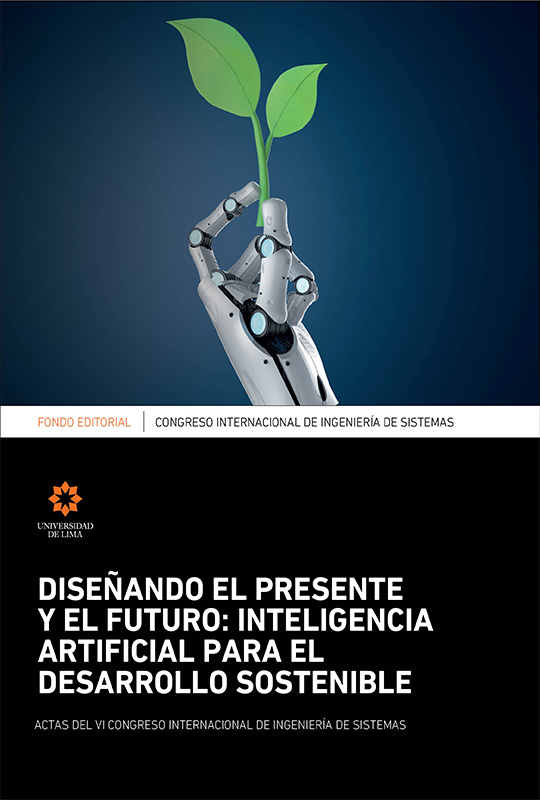Planning a Systemic Restructuring of the UNCAUS Medical Education Unit
DOI:
https://doi.org/10.26439/ciis2023.7078Keywords:
restructuring, systemic transformations, training toolsAbstract
In this article, we present a project to achieve the systemic restructuring of the Medical Educational Unit, dependent on the National University of Chaco Austral, Argentina. This Medical Unit has a variety of data about its patients, which is currently not automated in a patient’s Medical History. Because of that, it is difficult to obtain information with high added value for decision-making based on these records, as well as the development of tools for training medical students at the University. Using systemic techniques and tools, we planned changes to transform the data into structured knowledge. We are considering innovations through the incorporation of computer tools, such as databases and others based on Artificial Intelligence (AI), with the aim of representation and manipulation of knowledge to create models powerful enough to study real-life situations. Likewise, for the restructuring to be systemic, mechanisms are devised so that current employees accept the proposed changes without feeling underestimated.
Downloads
References
Al-Aswadi, F. N., Chan, H. Y., & Gan, K. H. (2020). Automatic ontology construction from text: a review from shallow to deep learning trend. Artificial Intelligence Review, 53, 3901-3928. https://doi.org/10.1007/s10462-019-09782-9
Checkland, P. B., & Haynes, M. G. (1994). Varieties of systems thinking: the case of soft systems methodology. System Dynamics Review, 10(2-3), 189-197.
Doumbouya, M. B., Kamsu-Foguem, B., Kenfack, H., & Foguem, C. (2015). Combining conceptual graphs and argumentation for aiding in the teleexpertise. Computers in Biology and Medicine, 63, 157-168. https://doi.org/10.1016/j.compbiomed.2015.05.012
ElAssy, O., de Vendt, R., Dalpiaz, F., & Brinkkemper, S. (2022). A semi-automated method for domain-specific ontology creation from medical guidelines. En A. Augusto, A. Gill, D. Bork. S. Nurcan, I. Reinhartz-Berger & R. Schmidt (Eds.), Enterprise, business-process and information systems modeling (pp. 295-309). Springer. https://doi.org/10.1007/978-3-031-07475-2_20
Fejer, H. N., Hasan, A. H., & Sadiq, A. T. (2022). A survey of Toulmin argumentation approach for medical applications. International Journal of Online & Biomedical Engineering, 18(2), 26-39. https://doi.org/10.3991/ijoe.v18i02.28025
Fu, S., Thorsteinsdottir, B., Zhang, X., Lopes, G. S., Pagali, S. R., LeBrasseur, N. K., Wen, A., Liu, H., Rocca, W. A., Olson, J. E., St. Sauver, J., & Sohn, S. (2022). A hybrid model to identify fall occurrence from electronic health records. International Journal of Medical Informatics, 162, 104736. https://doi.org/10.1016/j.ijmedinf.2022.104736
González Ramos, O. E. (2022). Sistema de recomendación de artículos científicos en el ámbito de la medicina: caso de estudio cáncer de mama. Diagnóstico, tratamiento y prevención [Tesis de Maestría, Benemérita Universidad Autónoma de Puebla]. https://hdl.handle.net/20.500.12371/18295
Guarino, N., Oberle, D., & Staab, S. (2009). What is an ontology? En S. Staab & R. Studer (Eds.), Handbook on ontologies (pp. 1-17). Springer. https://doi.org/10.1007/978-3-540-92673-3
Harahap, N. C., Handayani, P. W., & Hidayanto, A. N. (2022). Barriers and facilitators of personal health record adoption in Indonesia: Health facilities’ perspectives. International Journal of Medical Informatics, 162, 104750. https://doi.org/10.1016/j.ijmedinf.2022.104750
Kish, K., Bunch, M. J., & Xu, B. J. (2016). Soft systems methodologies in action: Environment, health & Shanghai’s elderly. Systemic Practice and Action Research, 29, 61-77. https://doi.org/10.1007/s11213-015-9353-4
Lokmic-Tomkins, Z., Gray, K., Cheshire, L., Parolini, A., Sharp, M., Tarrant, B., Hill, N., Rose, D., Webster, M. Virtue, D., Brigne, A., Waring, R., Broussard, F., Tsirgialos, A., & Cham, K. M. (2023). Integrating interprofessional electronic medical record teaching in preregistration healthcare degrees: A case study. International Journal of Medical Informatics, 169, 104910. https://doi.org/10.1016/j.ijmedinf.2022.104910
Guzmán Luna, J. A., López Bonilla, M., & Durley Torres, I. (2012). Metodologías y métodos para la construcción de ontologías. Scientia Et Technica, 17(50), 133-140. https://www.redalyc.org/articulo.oa?id=84923878033
Medlock, S., Ploegmakers, K. J., Cornet, R., & Pang, K. W. (2023). Use of an open-source electronic health record to establish a “virtual hospital”: A tale of two curricula. International Journal of Medical Informatics, 169, 104907. https://doi.org/10.1016/j.ijmedinf.2022.104907
Reynolds, M., & Holwell, S. (Eds.). (2010). Systems approaches to managing change: a practical guide. Springer. https://doi.org/10.1007/978-1-84882-809-4
Schvarstein, L. (1998). Diseño de organizaciones y en organizaciones. En L. Schvarstein, Diseño de organizaciones. Tensiones y paradojas (pp. 63-173). Paidós.
Subhashini, R., & Akilandeswari, J. (2011). A survey on ontology construction methodologies. International Journal of Enterprise Computing and Business Systems, 1(1), 60-72.
Torlak, N. G., & Müceldili, B. (2014). Soft systems methodology in action: the example of a private hospital. Systemic Practice and Action Research, 27, 325-361. https://doi.org/10.1007/s11213-013-9290-z


